When you're a student at Longwood Gardens one of the innumerable delights of spring is the opportunity to visit local gardens, both public and private. One of my favorites is the garden of David Culp at Brandywine Cottage. David specializes in the genus Helleborus, hybridizing new cultivars from his garden and cultivating natural crosses to breed selections that are a beautiful addition to the late winter garden. After years of trials he is able to select the best of the best and this year is offering a line called Brandywine Hybrids™. His website offers an amazing photo gallery and information about the Hellebores he grows.
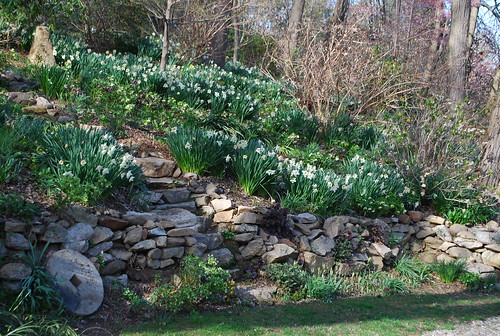
David has been helping his garden evolve for 20 years. It's a small garden - less than two acres - and is one of the most comfortable, enchanting gardens I've had the fortune to visit. The cottage itself dates back to the 18th century and was once a blacksmith's home and shop. When he bought the property, David decided to create a garden that complimented the history of the house. The garden is equal parts south-facing slope and level ground, on which he created a haven for Hellebores as well as a vegetable garden, trial beds, and areas for relaxing.
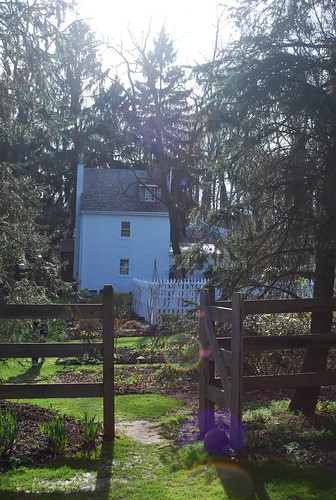
The main entrance to the cottage was originally to the south but has been changed to the west and features a charming brick patio and the original well that looks like something out of a story book.

David's passion for horticulture is evident not only in his conversation but in his garden. An avid collector, there is even a Leucojum named after him which he discovered in the UK. Container plantings are everywhere and he insists on four seasons of interest. Along with the Hellebores, we enjoyed the drifts of daffodils, tulips, snow flakes, corydalis, scilla, and other floral delights that any gardener - and non-gardener - would give their green thumb to have!
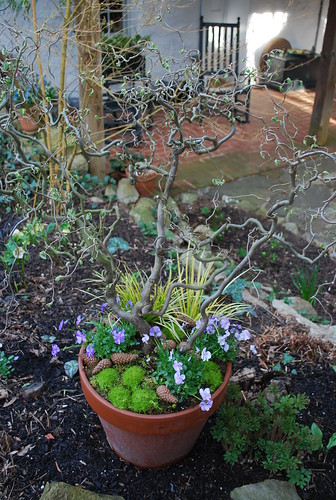
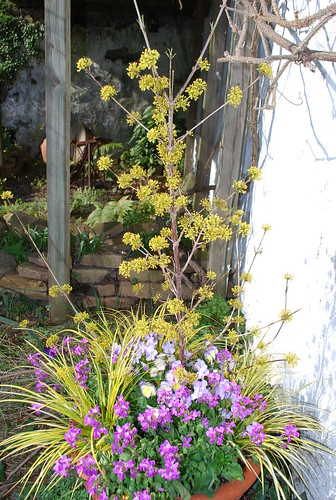
One of my favorite rooms in the garden is the Rock Garden, planted with hardy perennials, succulents, and containers. This hand-made wood trough overflows with Hellebore, Euphorbia, Pansies, Carex, and trailing ivy.
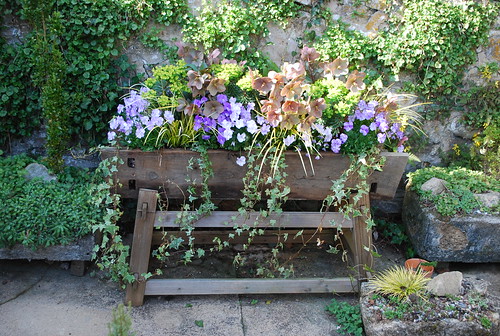
On the gravel car port, species tulips have been planted and allowed to naturalize. Their locations are marked by these jaunty Violas.
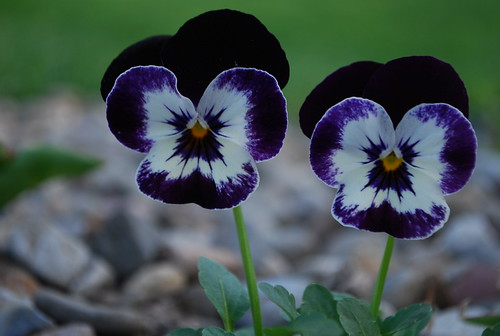
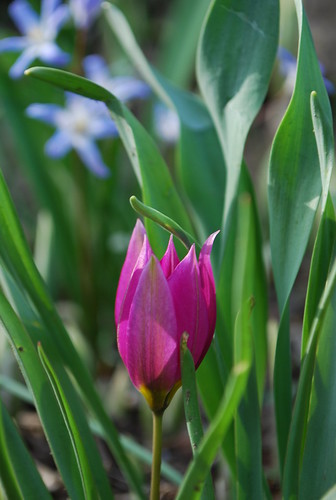
While giving us a tour of his trial grounds, David shared the standards with which he chooses and judges a Hellebore before it's made available in the trade. The sepals - the parts that actually give a Hellebore its color - should be evenly spaced. Most commonly there are five sepals but some cultivars are considered "doubles" and have ten or more.
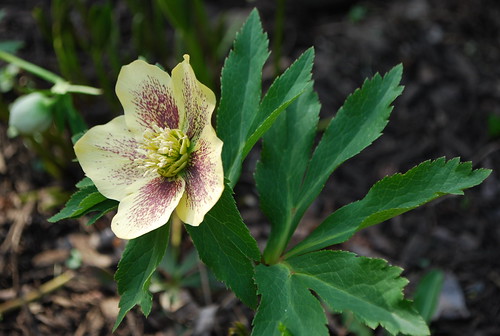
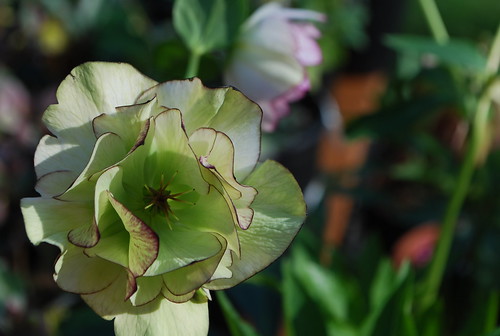
Another desirable characteristic is a short pedicel. The longer the pedicel, the more the flower droops. You don't want droopy flowers, but neither do you want upward-facing flowers. Wind, rain, and snow will damage the flowers and nectaries in blooms that have their faces up. Flowers with a slight nod that sort of look you in the eye are more protected, therefore a Hellebore that looks at you coyly is most pleasing!
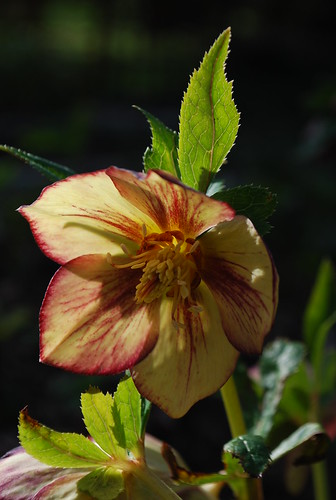 Indeed, the whole garden is a pleasure to behold and every corner is so artistically arranged that you feel as if you're in a magazine. If you ever have the chance to hear David speak you will recognize him instantly as one who has a passion for plants and who gains equal enjoyment from working with them as he does from sharing his enthusiasm with others!
Indeed, the whole garden is a pleasure to behold and every corner is so artistically arranged that you feel as if you're in a magazine. If you ever have the chance to hear David speak you will recognize him instantly as one who has a passion for plants and who gains equal enjoyment from working with them as he does from sharing his enthusiasm with others!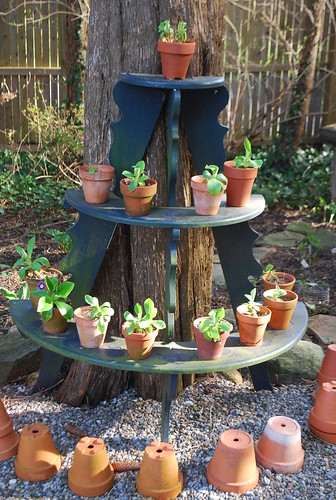
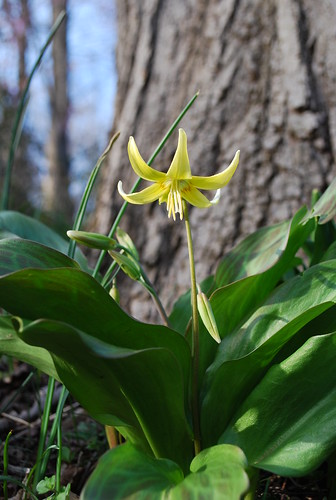







No comments:
Post a Comment